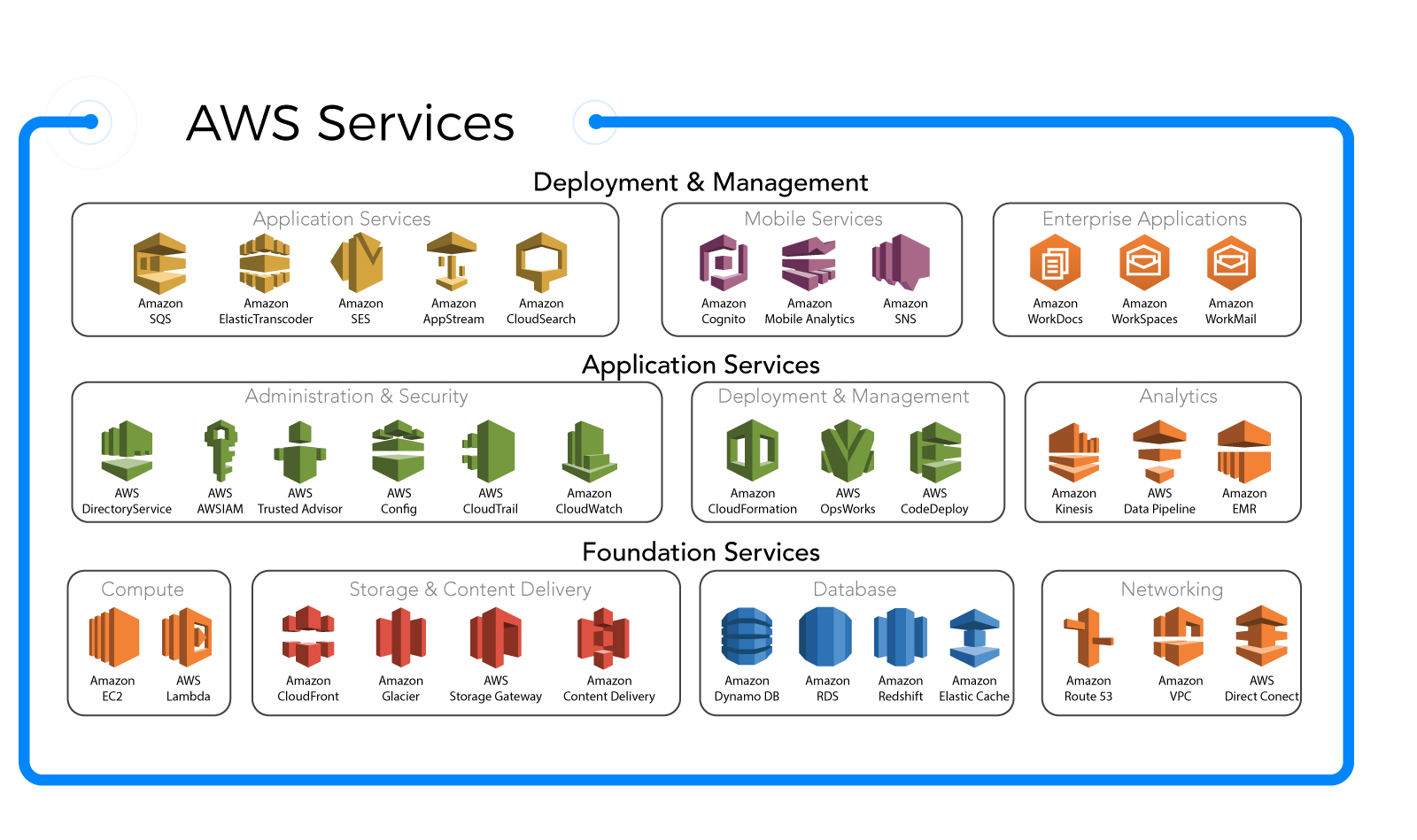Demystifying Cloud Computing with AWS: An Essential Guide for Beginners
A Journey into the World of Amazon Web Services for Aspiring Cloud Adventurers
In the boundless realm of the digital cosmos, a mesmerizing phenomenon reigns supreme: cloud computing. It weaves an enchanting tapestry, fusing innovation, flexibility, and boundless possibilities. Evolving like a celestial symphony, cloud computing gracefully transcended the constraints of conventional storage and local computing, adorning the technological horizon with an awe-inspiring radiance that leaves us spellbound.
Within this blog, we shall delve into the foundational concepts of cloud computing, explore the pivotal role played by AWS in this domain, and unravel the fundamentals of AWS for those eager to embark on a journey into the captivating realm of cloud computing.
What is Cloud Computing?
Cloud computing is a transformative technology paradigm that involves accessing computing resources and services over the internet, rather than relying on local servers or physical infrastructure. Users can leverage remote servers hosted in data centers by cloud service providers, offering scalability, cost-effectiveness, accessibility, and reliability, enabling seamless access to computing power, storage, databases, applications, and more from anywhere with an internet connection.
Cloud computing services
IaaS, PaaS, and Saas are the three most common models of cloud computing services that you can select based on the level of control, flexibility, and management your business needs.
Infrastructure as a Service(Iaas)
IaaS (Infrastructure as a Service) allows users to access and manage virtualized computing resources like servers, storage, and networking over the internet, providing the flexibility to scale resources as needed.
Platform as a Service(Paas)
PaaS (Platform as a Service) provides developers with a complete development and deployment environment, including tools, programming languages, databases, and application services, allowing them to focus solely on building and deploying applications without dealing with infrastructure management.
Software as a Service(SaaS)
SaaS (Software as a Service) delivers fully functional applications over the internet, eliminating the need for local installations and maintenance, and enabling users to access and use the software through web browsers from any device with an internet connection.
AWS: Cloud Computing's Cornerstone
Amazon Web Services(AWS), a subsidiary of Amazon, Launched in 2006, has grown exponentially to become a trailblazer and dominant force in the cloud services market. With its comprehensive suite of cloud-based services, AWS empowers businesses and individuals to access scalable, reliable, and cost-effective computing resources over the Internet.
AWS stands out among other cloud computing providers. According to estimates from Synergy Research Group, Amazon’s market share in the worldwide cloud infrastructure market amounted to a band of 32-34% in the first quarter of 2023.
AWS has a vast global infrastructure with data centers in multiple regions, providing high availability and low-latency access for cloud services. This empowers businesses with scalable and reliable cloud solutions worldwide.
Due to its worldwide infrastructure and global reach, AWS has emerged as a frontrunner in the field of cloud computing
Key AWS Products and Services
AWS offers a vast array of cloud products and services, including computing, storage, machine learning, IoT, security, and more, empowering businesses to innovate and scale in the cloud. Its comprehensive portfolio also encompasses deployment and management services, such as AWS Elastic Beanstalk and AWS CloudFormation, alongside foundational services like Amazon EC2 and Amazon S3, enabling organizations to accelerate their digital transformation and achieve greater efficiency and agility in the modern digital landscape.
Amidst AWS's diverse suite of services, I have curated a list of the ten most pivotal offerings that stand out as the most popular services(for beginners) provided by this leading cloud provider:
Amazon EC2 (Elastic Compute Cloud)
Amazon EC2 provides resizable compute capacity in the cloud, enabling users to launch and manage virtual servers (instances). It can be used to host websites, run applications, and perform various computational tasks, allowing users to scale resources up or down based on demand.
Amazon VPC (Virtual Private Cloud)
Amazon VPC lets users create isolated virtual networks within AWS, providing enhanced security and control over resources. It allows businesses to deploy resources in a private, isolated environment, making it ideal for setting up secure and robust network architectures.
AWS Lambda
AWS Lambda enables serverless computing, executing code in response to events without managing servers. It is commonly used for automating tasks, processing data, and building event-driven applications, reducing operational overhead and ensuring cost-effective execution.
Amazon S3 (Simple Storage Service)
Amazon S3 offers scalable object storage for data and files. It is widely used for storing and retrieving any amount of data, making it suitable for hosting static websites, storing backups, and serving media files.
Amazon DynamoDB
Amazon DynamoDB is a fully managed NoSQL database service with seamless scalability and low-latency performance. It is used in e-commerce, social media, gaming, and IoT for high-speed, flexible data storage, handling massive workloads, and ensuring data availability and protection in data-intensive applications.
Amazon RDS (Relational Database Service)
Amazon RDS provides managed databases, simplifying database setup, operation, and scaling. It is commonly used for running relational databases such as MySQL, PostgreSQL, and Microsoft SQL Server, making it easier to manage databases without the need for administrative tasks.
AWS IAM (Identity and Access Management)
AWS IAM manages access control and security for AWS resources. It enables administrators to control user access and permissions, ensuring the security and integrity of AWS resources in a real-world setting.
AWS S3 Glacier
AWS S3 Glacier offers long-term data archival and backup storage solutions. It is suitable for storing data that require infrequent access but needs to be retained for compliance or archival purposes.
Amazon SNS (Simple Notification Service)
Amazon SNS enables real-time notifications and messaging. It is often used for sending push notifications to mobile devices, publishing events to applications, and communicating time-sensitive information in real-life scenarios.
Amazon CloudFront
Amazon CloudFront is a content delivery network that speeds up the delivery of content, such as images, videos, and static files, to end-users globally. It is utilized to improve website performance and reduce latency, enhancing user experience.
Conclusion
Starting from understanding the basics of cloud computing to the various services of AWS, In between we learn about the cloud services and AWS's leading role in the cloud.
If you want to learn more about AWS, Click here, to learn Essential Interaction Methods with AWS.
I am always open to feedback and suggestions, so feel free to share your thoughts as you embark on your cloud adventure with AWS. Happy cloud adventuring!




